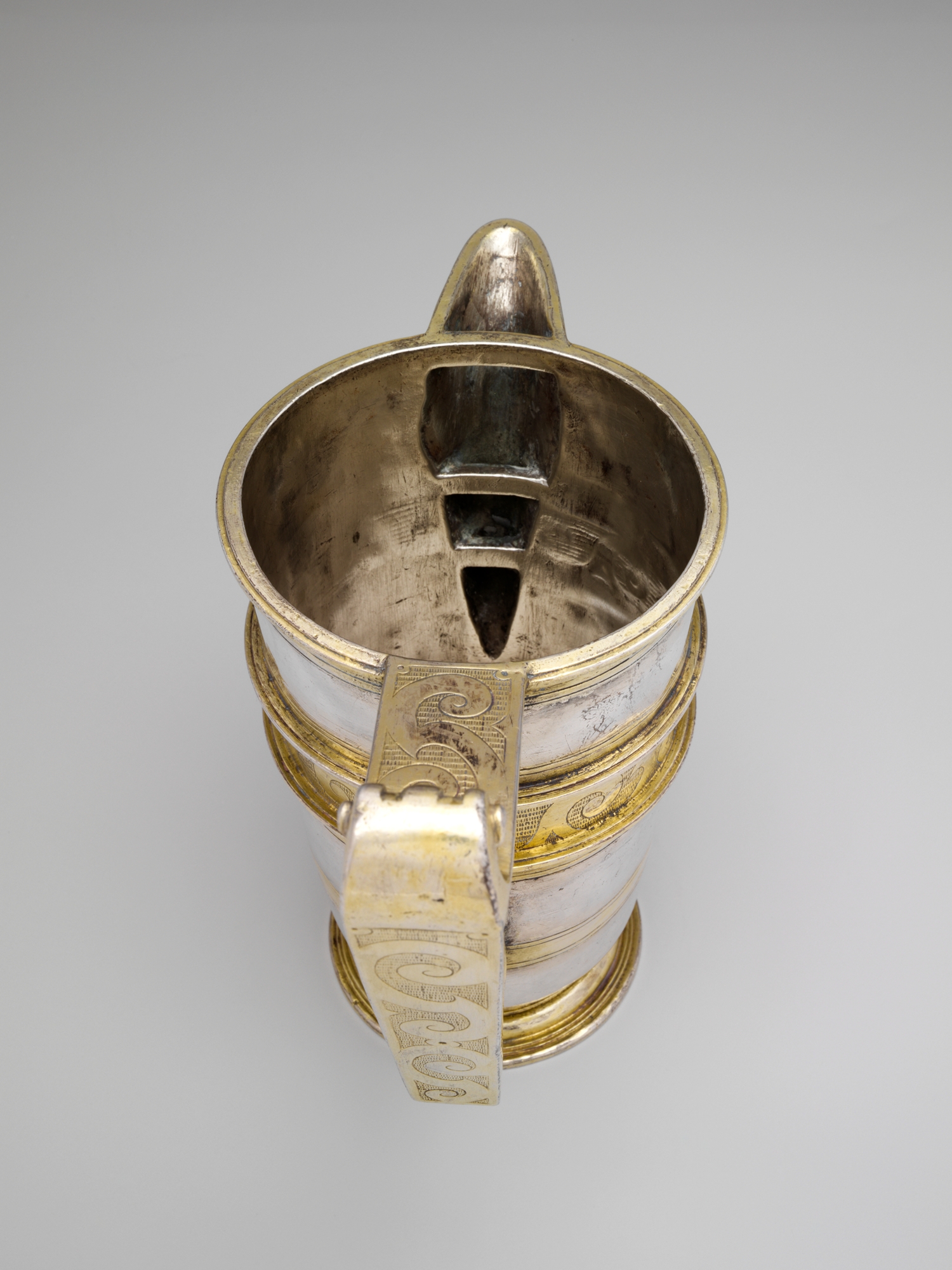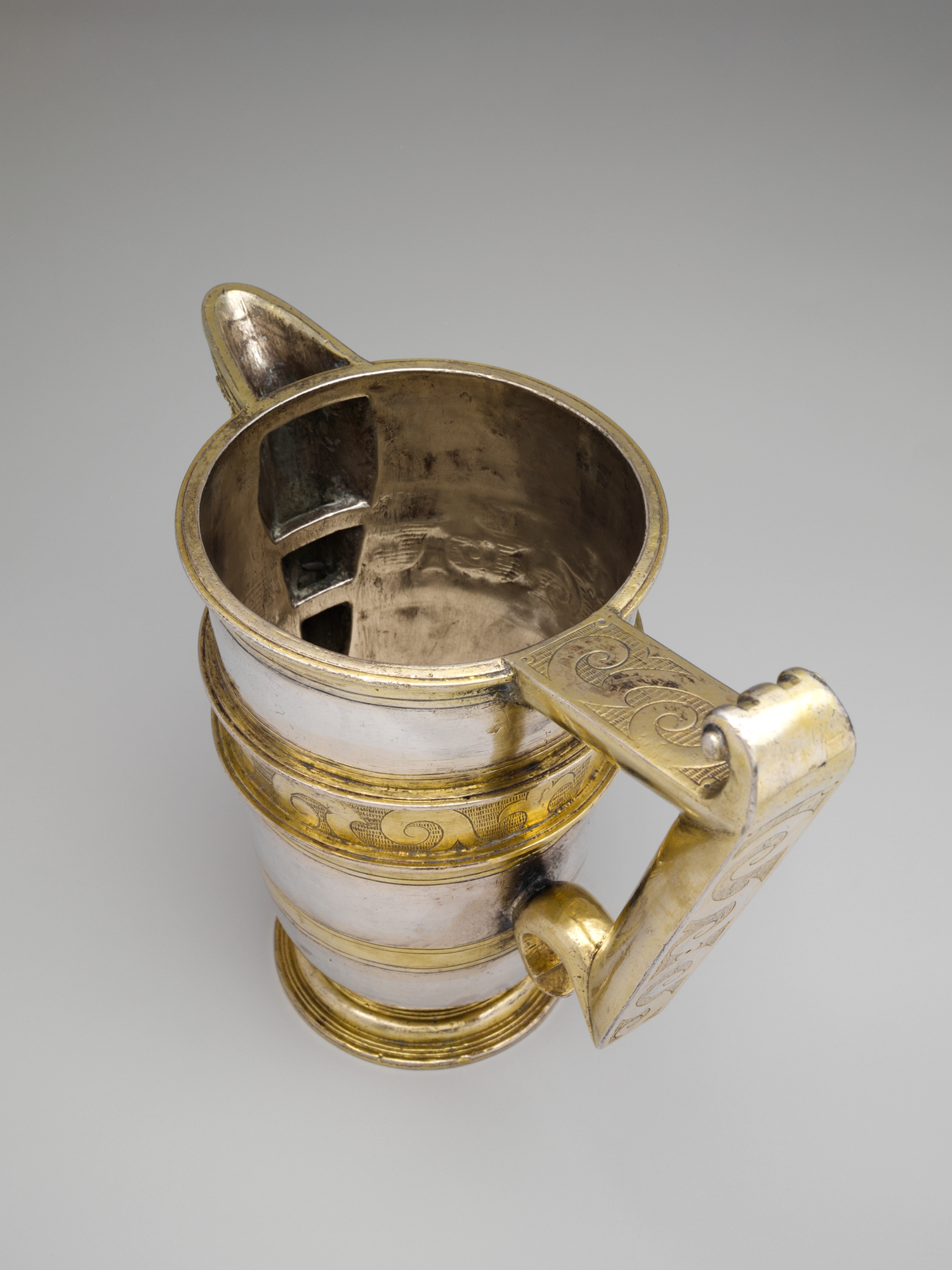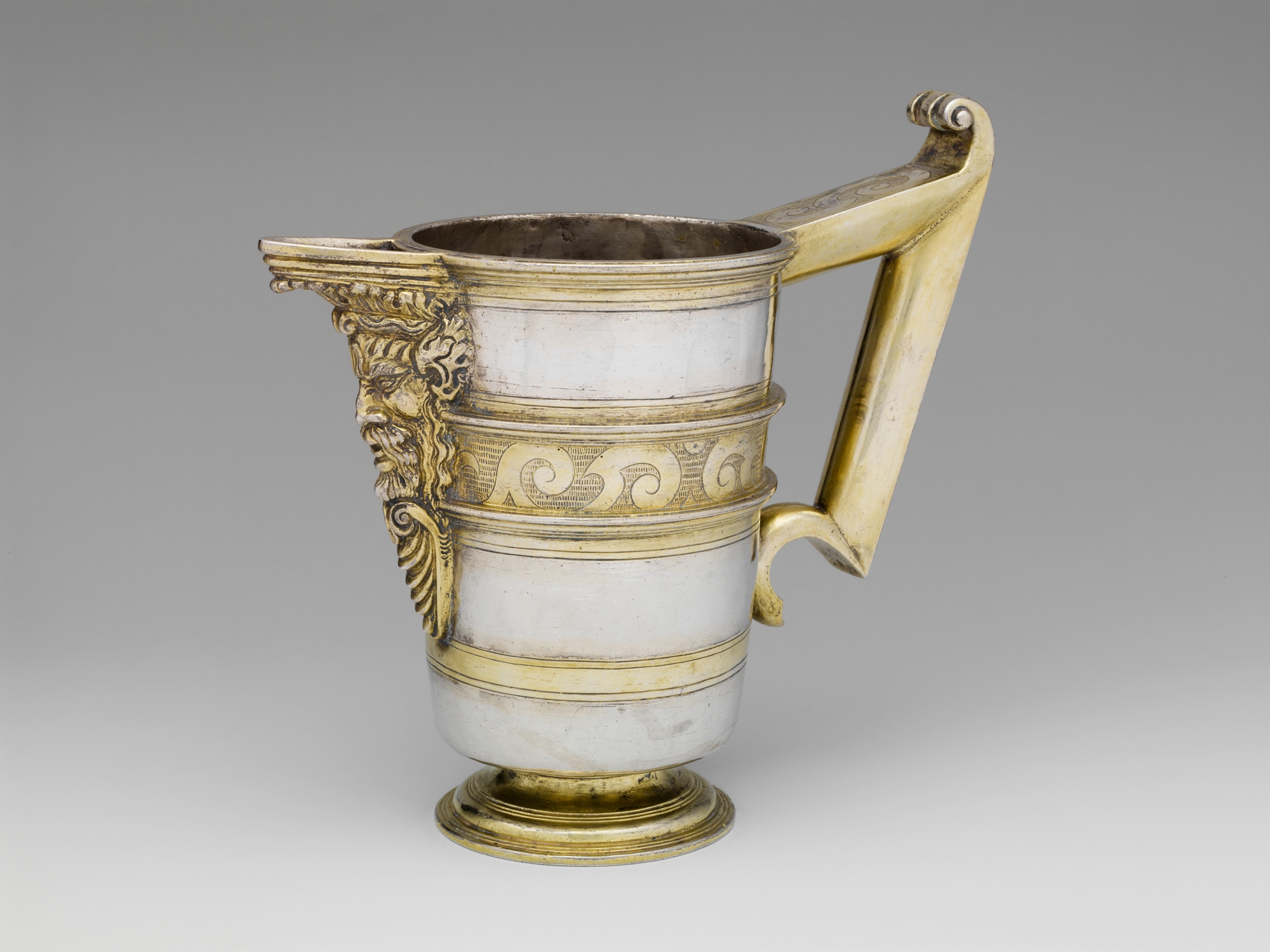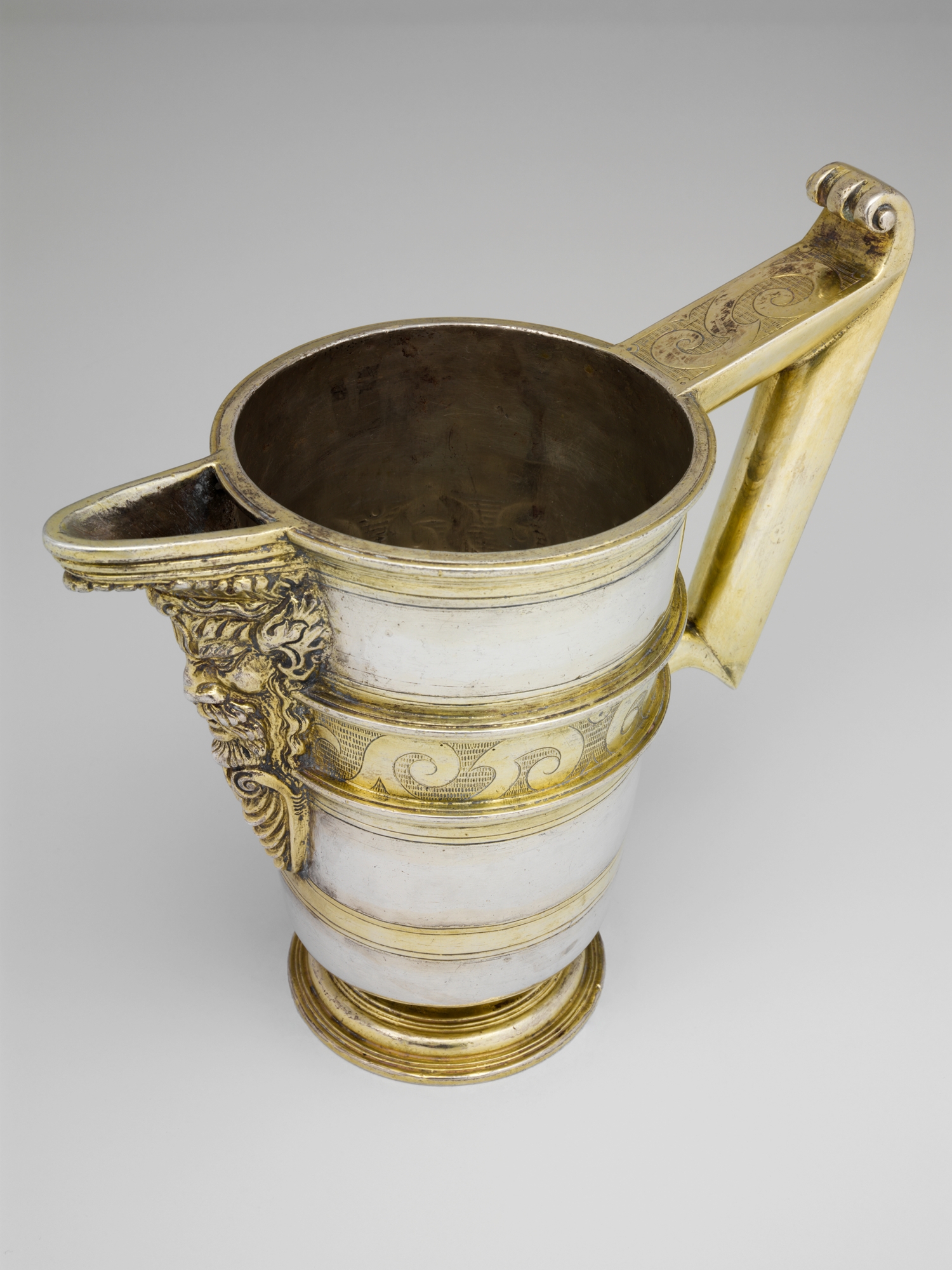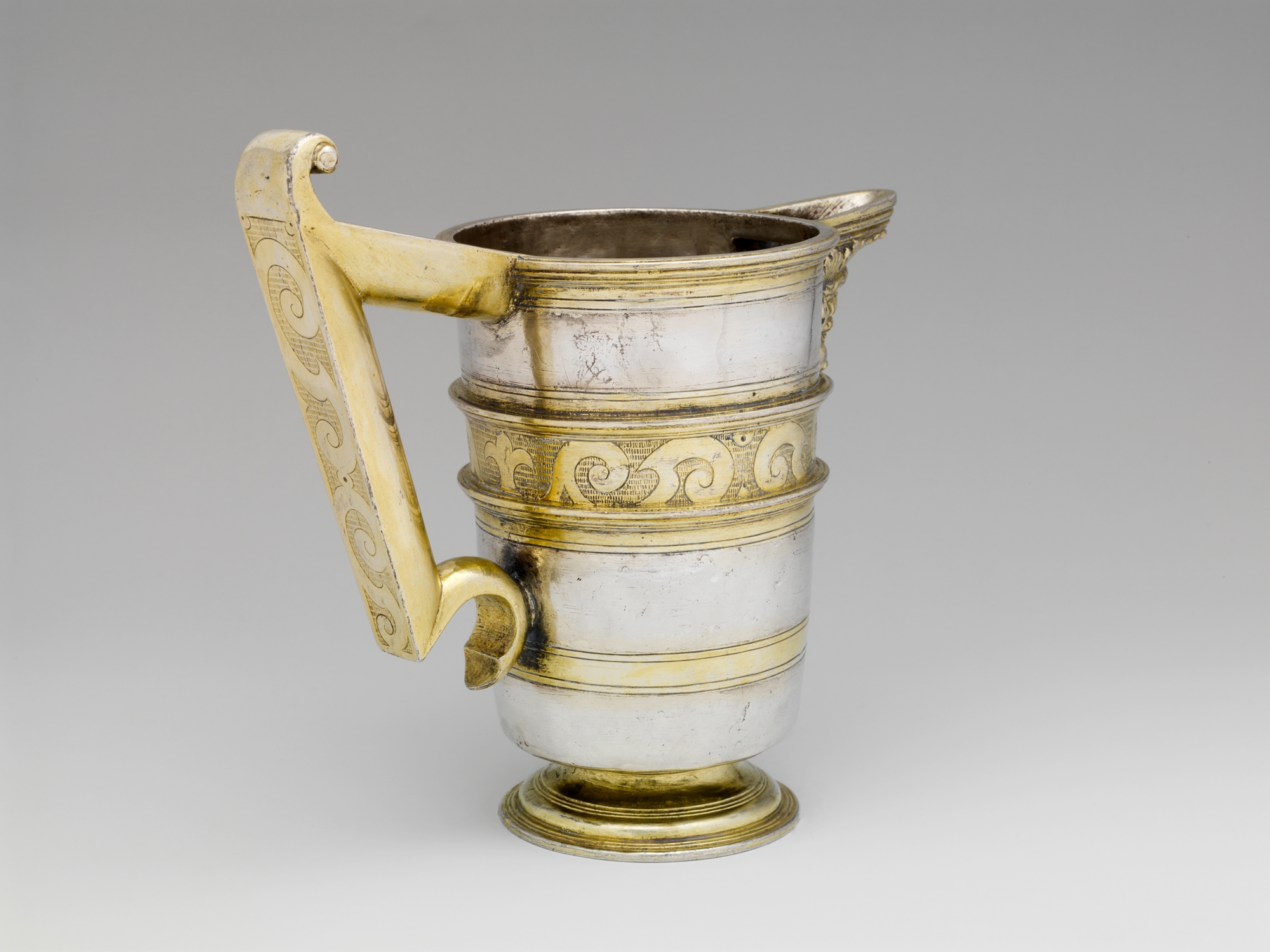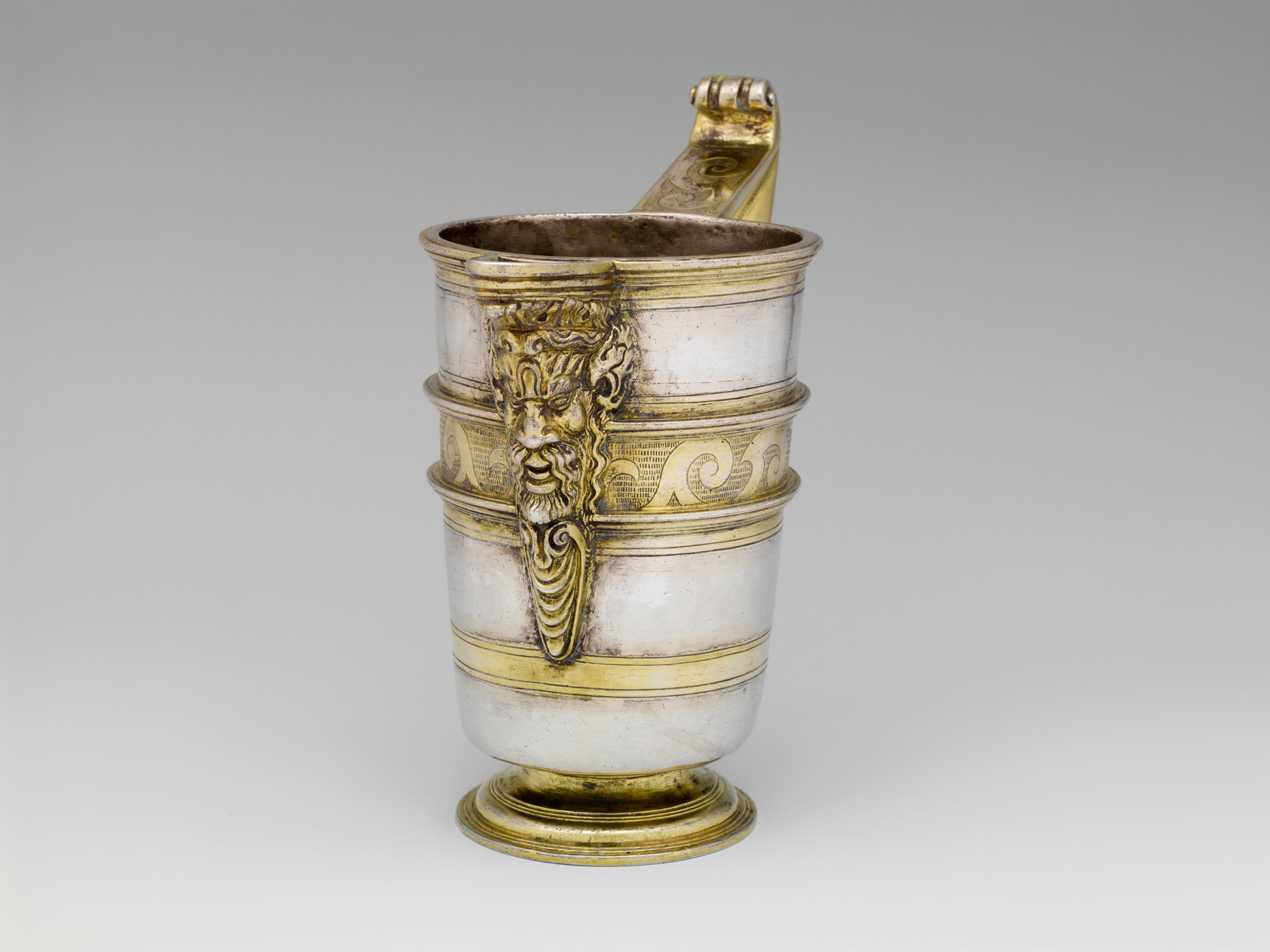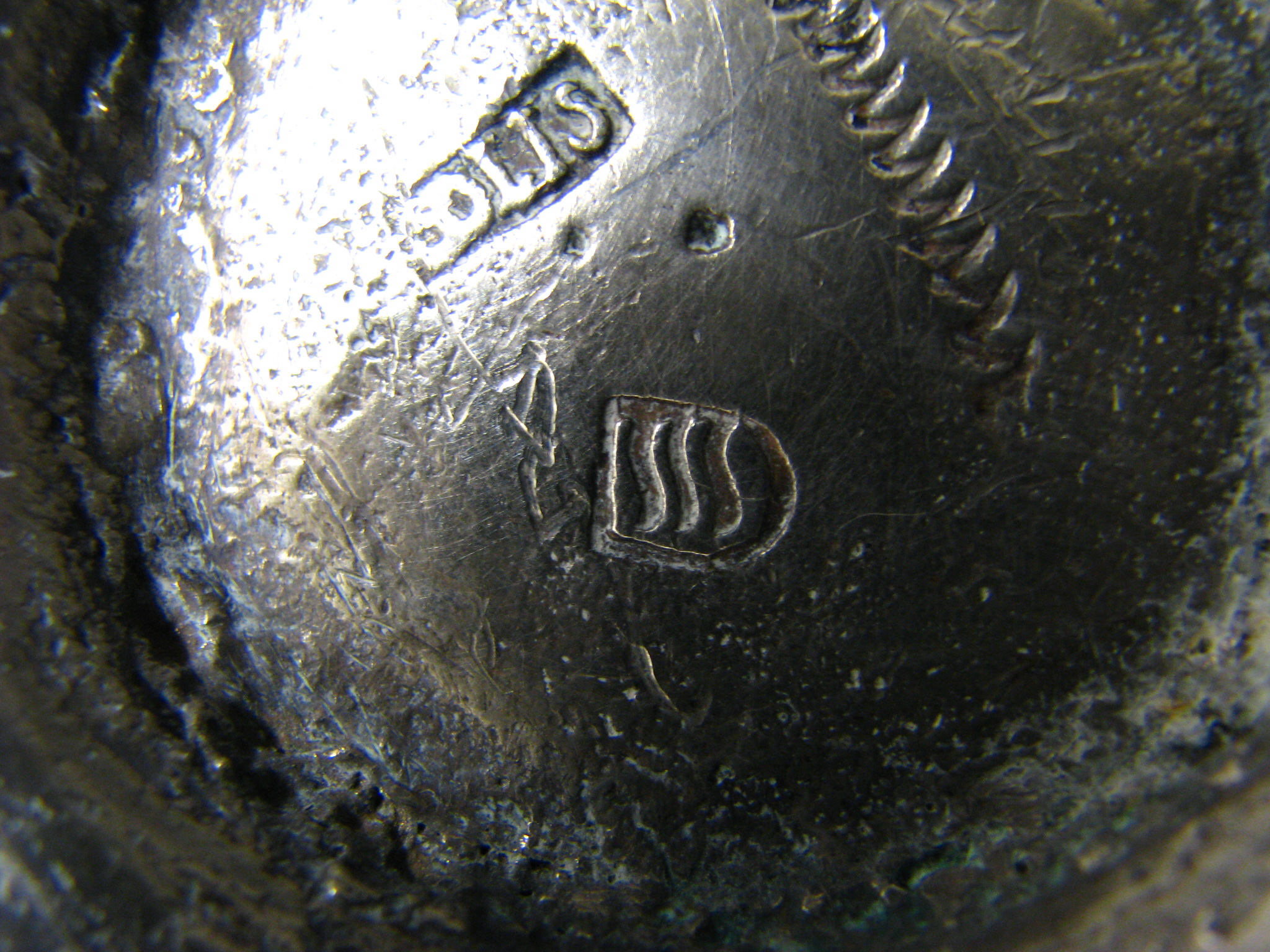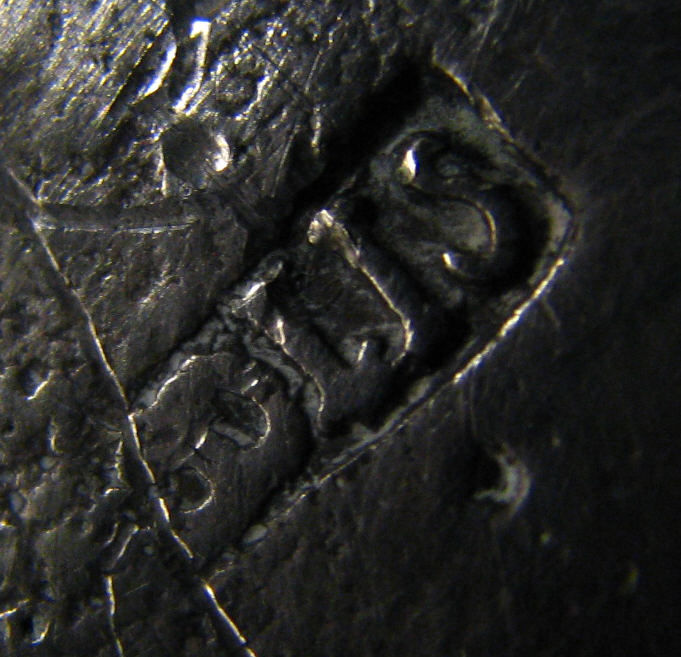Jarro de Pico
Possibly by Hernando Solis
Not on view
A luxury utensil of near-mythic status, the jarro de pico was the quintessential domestic object of the so-called golden age of Hispanic silver. These ornately beaked ewers, intended for hand washing at the tables of the wealthy, typically meld elements of Renaissance style with the geometrically conceived forms of the Philip II and Philip III periods, or the last half of the sixteenth and early part of the seventeenth century. In the jarro de pico the austerity of the ewer’s turned body is offset by the powerfully modeled detail on the spout, which is often reminiscent of the grotesque designs popular in Renaissance Italy. The sculptural vigor of this ewer’s spout, in the form of a bearded man with a foliate crown and pointed animal’s ears, contrasts with the sleekly functional, almost ergonomic form of the flamboyant handle, which features a spiky curve at its base and an unusually prominent thumb scroll that extends its height. The purity of the body is accented only by gilded horizontal bands and moldings.
Inside the foot of this jarro de pico are a mark bearing the arms of the city of Valladolid and a partial mark that has been tentatively identified as that of the silversmith Hernando Solis.
Due to rights restrictions, this image cannot be enlarged, viewed at full screen, or downloaded.
This artwork is meant to be viewed from right to left. Scroll left to view more.


